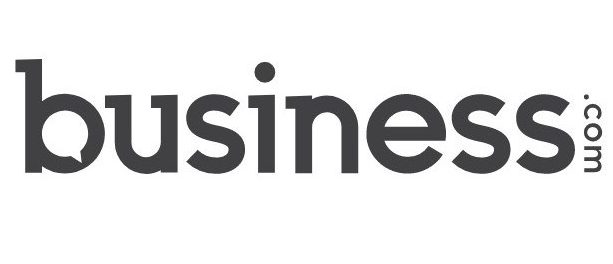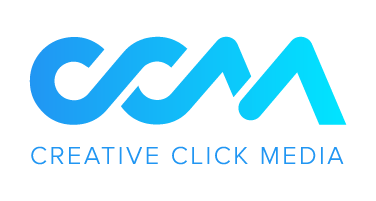Three Managing Partners Walk into a Bar… (Webinar Recap)
Date: April 4, 2023

On March 16, 2023, I had the privilege to moderate an exciting webinar featuring a candid discussion with three managing partners overseeing law firms of diverse compositions, including:
- William S. Barrett, Chief Executive Officer at Mandelbaum Barrett PC
- Shann M. Chaudhry, Principal Attorney & Managing Member at Shann M. Chaudhry Esq., Attorney at Law PLLC
- Domenic Romano, Founder & Managing Partner at Romano Law PLLC
All three shared their perspectives on topics of immediate interest to modern law firms, including:
- How they measure and manage their teams
- Impactful marketing campaigns at their firms
- How they have enhanced firm culture since 2020
- Forward-looking insights toward the “next big thing” in the legal marketplace
The webinar provided many actionable takeaways for managing partners across the U.S. – whether at firms of the solo, boutique or mid-sized variety – as well as powerful insights for in-house legal marketers seeking a better understanding of what’s on the mind of today’s legal chief executive.
In this article, we provide a deep dive into all these subjects and more that we discussed during the webinar, but here are a few of the major takeaways:
- Remember that your law firm is also a business; learn to not think like a lawyer when you’re not practicing law – creativity and innovation are how any business grows. Bring in business-minded people who can help you balance your business responsibilities and grow in a healthy way.
- Choose the metrics you want to track that will be most beneficial to the business – billable hours might not necessarily be the best.
- Trust your gut – your intuition is likely right – but also let data guide your decision-making.
- Technology is rapidly growing and changing, and law firms need to learn how to adapt with it. AI in particular has a tremendous number of potential applications, from marketing to e-discovery, and it’s worth taking the time to see how the technology can benefit your law firm, and how the related costs as you adapt to new best practices can be balanced.
- As a law firm, your commodity is people, and your most important resource is communication. Stay in regular communication with your clients, and engage in in-person events to make new connections. Make your law content accessible to laypeople, and make sure that you’re valuing the people who work for you, through positive affirmation, appropriate compensation, and stakeholder involvement.
Let’s take a closer look at some of the thoughts, advice, and suggestions that came up during the webinar, from the perspectives of our attendees.
Law Firms are Businesses – Treat Them As Such

(L-R) William S. Barrett, Shann M. Chaudhry and Domenic Romano
Right off the bat, Dominic Romano offers the key insight that managing a law firm requires a different mindset than practicing law. He emphasizes that lawyers are trained to be risk-averse, but that this can hinder creativity and innovation. While it’s important to consider potential risks, firms should also think outside the box and seek new perspectives.
Bill Barrett chimes in to mention how, in order to shift away from the typical lawyer mindset, it can be helpful to adopt project management tools from outside of the legal space. Bringing in business consultants to analyze the firm’s operations, for example, can provide valuable insight.
Shaun Chaudhry adds that the recent pandemic has demonstrated that clients are open to virtual meetings and services in a way that perhaps they weren’t before. Utilizing technology has made it easier to enter new markets, and it’s now possible (depending on your practice) to have more clients from outside your local area than from within it. One effective approach is to implement a business operating system for the firm, such as the Entrepreneurial Operating System (EOS).
Steps You Should Take
Consider bringing on a law firm administrator, says Chaudhry (a sort of “chief of staff,” as Romano refers to the role), to help manage operations and delegate tasks to the right people. They recommend hiring senior partners with management experience, and only making A-players the key decision makers. By putting the right people in the right seats, things can run much smoother.
Barrett also recommends building out a team of non-lawyer professionals and a culture and marketing function. Doing so can help attract and retain talented individuals and make a positive impact in the communities the firm serves. Formalizing the firm’s culture and letting it shine can have profound ripple effects. He also muses that you might be the first in your region to bring on a chief cultural officer at your law firm, which would go a long way towards helping to bring in top talent.
I also felt it was important to mention that it’s critical for every firm to assess where you are and where you want to go as a business, and to make sure you have the right players on your team who are going to help the firm achieve those goals.
Steps NOT to Take
According to Barrett, while the pandemic forced many companies to adopt virtual hiring practices, some felt that this interfered with the normal process and made it difficult to get a clear sense of who the person was and how they interacted with others. In the legal world, not having people in-person at least some of the time interferes with the mentorship process and impacts turnover.
Chaudhry brings up another of the key insights from this webinar by discussing that, while ignoring intuition and following statistics is important in many circumstances, sometimes playing a hunch is still the right thing to do. While lawyers are trained to look at facts and data, there is still value in following your gut. Repeatedly ignoring your intuition can sometimes lead to disastrous outcomes.
Don’t be overly compassionate as an employer, adds Romano. While it’s important to be empathetic and understanding towards employees, there is a limit to how much slack you can give. When someone shows you who they really are, believe them.
Finding the Right Metrics For Tracking Your Success
Romano believes, and all the participants agree, that to more effectively evaluate how your firm is meeting its business goals, you should look beyond just the billable hour, and evaluate the results that those hours generate. For example, an hour of mindful non-billable work, such as creating content or building relationships, can be worth ten hours of billable work in eventual returns. Track the total hours invested in both the practice and business of law, and aim to produce at least one piece of original content per month to support your online presence.
Billable hours alone as a metric can sometimes be meaningless, says Barrett. Instead, prioritize the value that your work brings to clients. Look at the dollars generated from the work done and whether clients thought they received value from that. Additionally, evaluate intangibles such as cross-marketing, thought leadership, mentorship of junior staff, and committee service. As a leader in your firm, consider what kind of team member you are, and if you are a good partner– these factors can have as much of an impact as the money.
Use EOS techniques to evaluate performance on a weekly, monthly, quarterly, and annual basis, recommends Chaudhry. Be transparent with all your numbers, and schedule regular meetings where every individual provides their metrics. These metrics feed into the most important numbers at the firm, helping everyone to buy into the importance of tracking and accountability. Every law firm has a unique approach to measuring and managing productivity, and firms of different sizes can learn from each other and adopt the best aspects for their specific needs.
When it comes to billing for regular “just touching base” phone calls, the general consensus among all three managing partners is to avoid billing for them. Some firms don’t even charge the portion of their bill that ordinarily covers these courtesy calls. Avoid billing for any phone calls, except paid consultations, as it conditions the client not to call, and impacts your ability to build a relationship. However, it is certainly appropriate to bill for phone calls when you are fighting for your client in a call with a third party, or providing intensive legal advice during a lengthy call.
Enhancing Firm Culture and Talent Retention
Recruiting top talent is always a challenge, but many firms have had success in attracting the right people by focusing on the firm’s culture and values. While there may be competition for talent, when the right person and firm come together, it’s a mutually beneficial fit, says Barrett.
In 2022, says Romano, there was a limited pool of exceptional talent available, but the current market presents more opportunities for talent acquisition. Be proactive in seeking out the right candidates, especially in a wider talent pool. Chaudhry says that finding top-tier talent can be difficult, but stay committed to your hiring standards. A rigorous screening process ensures that you bring on only A-talent, so persevere in your search for the right people to help your firm grow.
When it comes to retaining employees, paying them fairly and ensuring a fair compensation structure is crucial. Running a lean operation can help achieve this. Additionally, providing autonomy and flexibility in how employees practice can be helpful.
Another important factor regarding compensation is benefits, with even some small firms offering a full suite of benefits and competitive pay to retain employees. Some firms, such as Romano’s, even hire a “chief happiness officer” to focus on employee culture and happiness, which can have a significant impact on retention. Ultimately, fostering a positive work-life balance and prioritizing employee well-being can go a long way in retaining top talent.
AI Or Die? What’s Coming Next for Law Firms?
The next big thing for law firms is AI, Chaudhry says confidently, particularly in the transactional world. Writing contracts with tools like ChatGPT is still in the experimental phase, but not keeping up with AI puts firms behind the curve. Some, like Romano, have adopted the motto “Use AI Or Die,” as technology is evolving so rapidly that firms must evolve with it.
Barrett has a different perspective, saying that the impact of AI will be seen in best practices around technology, such as cybersecurity compliance and e-discovery. Compliance will be expensive, and firms will have to decide whether they want to stay small and rationalize the cost, or go big. Larger firms are better positioned to take the sting out of major tech spend, while mid-sized firms may feel the squeeze, at least in the near term.
Romano thinks that paralegals especially will lean into AI, and that boutique firms will always be able to maintain their position in their niche, but smaller-to-midsize law firms may have a difficult time maintaining cost per capita. The more attorneys you have to spread that cost among, the better it will be. In short, he says, the tsunami of AI is coming, and firms can’t afford to stick their heads in the sand in the meantime, or they risk going the way of Blockbuster Video.
Usefulness of AI
Among its many uses, AI can be leveraged for marketing purposes by providing outlines, ideas, and topics for blog posts, says Chaudhry. It can help to take the inertia out of getting started and provide an easy starting point for organizing thoughts. Then, a person can take over for fact-checking and adding personality to content, in order to avoid losing the human touch.
Using AI for the initial draft of documents can be very powerful, says Romano, as it allows for a first draft to be created with very little effort. This can help to get the thought process started, but it’s important to balance the use of AI with the need for a personal touch.
Again, Barrett’s take on AI is more conservative, saying that, in terms of e-discovery, AI can be very helpful in sifting through information that would have taken hours for attorneys to do manually. This can save time and money for clients, and law firms can absorb and distribute the cost across their attorney pool. However, he adds, there is still some risk involved with trusting AI too completely, and human oversight is still necessary.
How Marketing Factors Into Your Law Firm’s Business Plan
Like it or not, affirms Romano, law firms are in the communications business. One technique to help your firm connect with the public and potential clients more effectively is by demystifying the law through content creation. If writing blog posts feels too rote or esoteric, work with a digital marketing team like 9Sail to help develop content for your website. You can also have attorneys at the firm help create accessible and helpful short-form online content.
Speaking engagements and trade shows also provide opportunities for relationship building and can yield high returns. In-person thought leadership, such as at conferences or company presentations, allows attorneys to showcase their expertise and answer questions on the spot, demonstrating their authority in the field. Consider authoring books on topics where you have substantial experience and knowledge, that can serve as valuable takeaways for attendees at live events and reinforce your reputation as an expert.
Media appearances, interviews, and the like may disrupt your day, but they have proven to pay off in terms of brand recognition and credibility.
Barrett also comments that regular communication with existing clients and ensuring that they are kept informed is essential, even if there are no specific updates. Your goal should be to help clients maintain calm and composure, so follow the mantra of “follow up with them before they follow up with you,” according to Romano.
Overall, your firm’s marketing efforts should be centered around building relationships, establishing expertise, and providing helpful and accessible information to clients.
Moving Your Firm Forward in 2023
To wrap up, I believe there are three absolutely vital points for law firm managers which can be distilled from the nuanced and wide-ranging discussion we had in this webinar. Those are:
- To better serve your clients and prospective clients, focus on demystification of the law and accessibility of attorneys and legal services. Break down complex legal concepts and provide easy access to information and resources, such as through online content creation.
- Internally, operate as a meritocracy. Allow for autonomy, and create a positive culture where partners, employees, and clients can all thrive.
- Follow your gut and trust your intuition as a leader in the firm, while also relying on data to help support and guide your decision-making. This can lead to better outcomes, and ultimately improve the success of the firm as a whole.
In terms of communicating with their clients and the public, we plan on incorporating these highly actionable insights into recommendations for communication best practices that we share with all our law firm clients here at 9Sail. As a managing partner or key decision maker at your own firm, you can leverage this advice to bolster your own communications and marketing strategies.
If you’d like to watch the webinar for yourself, it is now available on-demand here.
We wish you nothing but the greatest success as we move forward into the rest of 2023 and beyond!
















